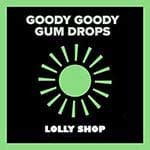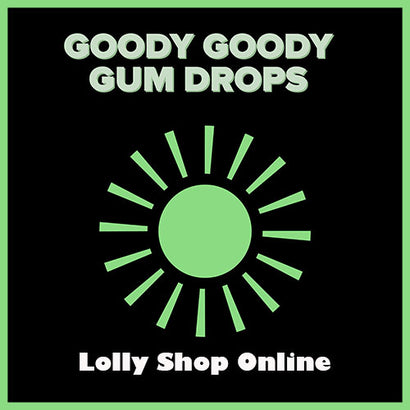Menu
-
- HOME
- CATEGORIES
-
CHOCOLATE
-
LOLLIES
-
ROCK & LOLLIPOPS
- LOLLY BUFFET
-
LOLLY BAGS & JARS
-
SALE
- BEST SELLERS
- VEGAN
- SEARCH
-
- HOME
- CATEGORIES
- CHOCOLATE
- LOLLIES
- ROCK & LOLLIPOPS
- LOLLY BUFFET
- LOLLY BAGS & JARS
- SALE
- BEST SELLERS
- VEGAN
- SEARCH
- 0414231212
- Login
-
Australia (AUD $)

Add description, images, menus and links to your mega menu
A column with no settings can be used as a spacer
Link to your collections, sales and even external links
Add up to five columns
Add description, images, menus and links to your mega menu
A column with no settings can be used as a spacer
Link to your collections, sales and even external links
Add up to five columns

A History of Australian Lollies
December 23, 2021 9 min read
A short history of some of Australia's most iconic confectionery:
One of Australia's first confectioners was Stedman- Henderson Sweets founded by James Stedman in 1840. Sir MacPherson Robertson founded McRobertson's Steam Confectionery Works in 1880 and Abel Hoadley started Hoadley's Chocolates around 1912. Below are some of Australia's most loved lollies and chocolates. Go back in time to your childhood. Check out our Retro Lollies category.
Employing over 3000 people and exporting to 15 countries MacRobertsons was the largest confectionery company in the southern hemisphere producing over 700 chocolate and confectionery lines from their factory in Fitzroy and later at Ringwood, Melbourne.
Cadbury took over MacRobertsons in 1967 and still produces and sells many of the original MacRobertson products including Cherry Ripes, Freddo Frogs & Old Gold Chocolate.

The disappearance of the local corner shop has had a huge impact on Australia's confectionery industry. Every suburb had it's corner milk bars. Many of the old-fashioned sweets have been lost, and manufacturers have lost a valuable venue to test new products. The filled to the brim mixed businesses or milk bars, with their lolly counters overflowing with hundreds of different kinds of loose sweets priced at 1¢, 2¢, 5¢, or 10¢, have been driven out and replaced by supermarkets offering $3 and $5 chocolate bars and blocks and pre-packaged small lolly packs. The big supermarkets have put many small, independent confectionery makers out of business, and others have been taken over by multinationals. Nestle, for instance, has acquired Sweetacres (maker of Fantales, Minties, and Jaffas), Hoadley's (Violet Crumble and Polly Waffle), and Mastercraft (Redskins and Mint Patties), and now markets the most of these lines under the Allen's label.
Even some of these products have been discontinued in the 2020's including Redskins (Re-branded as Red Ripperz and discontinued after a couple of months together with Sherbies. Red Ripperz returned in early 2024.) Violet Crumbles & Scorched Peanut Bars have come back and Poly Waffle bars may be back soon. Allen's Lollies have released new products like Chokito Bites, Sourz Frogs & Mini Chocolate Raspberry Balls only to discontinue them after a few months of being released.
- Minties (1922) were invented in 1922 by James Noble Stedman (1860–1944), son of Stedman-Henderson Sweets company founder (and Australia's first confectioner) James Stedman (1840–1913). Minties were patented in 1926,and were manufactured at the Sweetacres factory at Rosebery, Sydey and distributed by Nestlé from around 1930. The company spent over £200,000 on its 16-acre Rosebery complex. The 12-acre factory on the site, designed by architect John Burcham Clamp , ensured all local sweet manufacture happened under the one roof with the various manufacturing branches in the city and Pyrmont being consolidated. The complex also provided for 1000-plus mainly female workers, with a large canteen and social hall, sports and cricket grounds, a library, band and sports clubs. In 1968, Stedman-Henderson was taken over by Hoadleys, which was acquired in 1971 by Rowntree’s which was taken over globally by Nestlé in 1981. Minties are now sold as Allens Minties. About 500 million are consumed each year. Minties were promoted using quirky cartoons and the slogan "It's moments like these you need Minties." This is the longest running advertising slogan in Australian history.

- Polly Waffle (1947) Hoadley's Chocolates made the first Polly Waffle bar in Melbourne in 1947. Polly Waffle was a crispy wafer cylinder filled with marshmallow and dipped in chocolate and was one of Australia's favourites confectionery items during the 20th century. It was invented by the company accounts supervisor Mayfield B. Anthony. South Australian chocolate makers Robern Menz hope to bring back this Australian classic in 2022. Earlier attempts were halted due to the Covid19 Pandemic starting early 2020.
- Violet Crumble (1913) Abel Hoadley produced his first chocolate assortment, he packed it with a piece of honeycomb. The honeycomb became so popular that Hoadley decided to produce an individual honeycomb bar. This was not an easy task; as the pieces of honeycomb cooled, they absorbed moisture and started sticking together. Eventually, this hygroscopic nature of honeycomb led Hoadley to dip the honeycomb bars in chocolate, keeping the honeycomb dry and crunchy. Thus, in 1913, the Violet Crumble bar was created. Abel's wife Susannah Ann's favourite flower was the violet so Hoadley registered the name Violet Crumble and wrapped it in a purple wrapper. Violet Crumble was an instant success at the time and has remained popular into the twenty-first century.
- Life Savers (1925) invented in America in 1912 by Clarence Crane in Garrettsville, Ohio. Life Savers were a hard peppermint candy shaped like circular life-buoys thrown to rescue the drowning. In 1925, James Stedman-Henderson Sweets Ltd, who produced the Sweetacre brand of confectionery, introduced the American sweet Life-Savers to Australia, which they originally produced in Petersham. The company's founder James Stedman had been in the sweet-making business since 1850. Together with his six sons, he went on to develop the largest import wholesale and manufacturing confectionery business in Australia.
- Lifesavers (1930) Melbourne-based confectioners MacRobertson’s began to manufacture distribute Life-Savers in the 1930s. Owing to the 44-hour working week being in vogue in the confectionery trade in New South Wales, it was decided to transfer the Life-Savers' factory to Melbourne, to adjoin the establishment at Fitzroy, where the 48-hour week is in operation. .
-
Musk Sticks (1918) In 1887, the Launceston Examiner tells us that a confectioner by the name of J. Beaumont imported five tanks and four cases of lollies, including "rose and musk lozenges". Musk sticks first appear in print in Australia 30 years later, with an auction notice in The Sydney Morning Herald. On December 17, 1918, the cargo of the SS City of Karachi steamship was auctioned off, including "45 boxes of musk sticks". Sadly, the announcement doesn't record the origin of the lollies. The ship itself belonged to a London company and, just the previous month, had been transporting Australian troops home from World War I. But the brief reference does tell us that musk sticks were common enough by 1918 not to need further explanation. Musk was added to the Life Savers line-up in Australia around 1932, and has remained popular ever since.
The skinny, fairy-pink lollies are well-known throughout Australia and New Zealand but strangely, they remain a mystery to the rest of the world.
- Jaffas (1931) Jaffas, the chocolate-coated orange balls that were rolled down the ailses at a Saturday movie matinee were first made in 1931 by James Stedman-Henderson's Sweets Ltd in Sydney. They were named by artist Len Gapp after a town in Palestine where oranges were grown for export, and the orange flavour was the work of Sweetacres food chemist Tom Colston Coggan, who formulated several different syrups before landing on the Jaffa coating whose taste has long defied replication by rivals. Jaffas are now made in Australia by Allen's lollies, a division of Nestlé.
-
Choo Choo Bars (1954)
The Choo-Choo Bar was originally made by Plaistowe in Western Australia. The wrapper of the chewy liquorice-flavoured toffee bar originally depicted a train being driven by a very non-PC gollywog.
The Choo Choo bar has had a chequered ownership history. At some point, the brand appears to have been sold to the Sydney-based Mastercraft makers of the Scorched Peanut Bar, Redskins and Mint Patties. Mastercraft was acquired by Lifesavers Australia in 1964, which was in turn acquired by Nestlé in the late 1980s. Nestlé also eventually acquired Plaistowe.
Choo Choos were discontinued sometime in the 1990s after Nestlé acquired the business. They were revived after Melbourne based Lagoon Confectioners purchased the brand in 2007. Lagoon are famous for their Fruity Sherbet Bombs, Fruity Acid Drops and other individually wrapped lollies.
- Scorched Peanut Bar (2040) It seems up to smaller confectionery companies to revive old favourites. The dearly loved Mastercraft Scorched Peanut Bar, introduced in the 1940s, also disappeared for a time but was reintroduced by Cooks Confectionery in 2019.
-
Cherry Ripe Bar (1924) The Australian company MacRobertson's Steam Confectionery Works first manufactured the Cherry Ripe in 1924. The company was founded in Melbourne by Macpherson Robertson in 1880 and is famous for a number of iconic chocolates including the Freddo Frog. Larger than life, Robertson was renowned for his white suits, instinct for successful chocolate products, sponsoring an air race between Australia and England in 1934, participating in novelty bicycle displays, and opening a cycling school among other things.
Now Australia's oldest chocolate bar, the Cherry Ripe consists of a centre of cherry and coconut covered in Old Gold dark chocolate. A Roy Morgan survey in 2013 named the Cherry Ripe Australia s most popular chocolate bar and it has remained in the top three in subsequent surveys. While the MacRobertson company was sold to Cadbury in 1967, and their industrial buildings have now been converted into apartments, a cherry tree planted by the company still grows in the courtyard in tribute to the humble Cherry Ripe.
In 2015 the Cadbury's factory in Ringwood, Victoria processes 40 million Cherry Ripe bars annually, with six tonnes of chocolate being produced every two hours at the factory. The Cherry Ripe Story
-
Freddo Frog (1931) In 1931, 18 year old Harry Melbourne overheard someone say to the boss that his proposed new product should be the shape of a mouse as McRobertsons had been selling sugar mice when they first opened the factory. Harry chipped in saying "that's rubbish. Women and children are afraid of mice. That won't sell. I recon a frog. Kids love catching tadpoles and frogs. Macpherson Robertson gave him three days to come up with the moulds and have the product on his desk for sampling. Harry fashioned the moulds from German silver and had the first Freddo Frogs on the boss' desk, in four flavours, in the allocated time. Not long afterwards, he was told: "You've backed a winner" and promoted to foreman. Adding a touch of marketing savvy to his creative flair, he told the owner of the company, Sir Macpherson Robertson: "Call it Freddo, after Fred." - one of his mates at the factory, rather than press for it to be named 'Harry' as suggested by some co-workers.
He retired as a chocolate maker after 38 years, at age 57, rather than take a senior job at Cadbury after the takeover. He took a job as the keeper of Caulfield Town Hall. Harry. Melbourne didn't receive a penny from his employer for his money-making suggestion, but it never bothered him. "Freddo was made for the love of the company," he told his family. A grateful Cadbury, however, kept him in chocolates and from time to time sought his advice. Today Freddo is one of Cadbury Australia's best-selling products - 90 million Freddos are eaten every year in Australia.
-
Fantales (1928) Fantales were created by Sweetacres shortly after the ‘talkies’ arrived, and were produced specifically as a sweet to be sold to moviegoers. The chocolate-covered caramels were introduced by Sweetacres in 1930. On their wrappers were, literally, fan tales – brief biographies of movie stars. The tradition continues, with the stories updated every couple of years.
Nestle was the sole distributing agent for Sweetacres throughout Australia. Today they own the Fantales brand, along with other famous Sweetacres products like Minties and Jaffas. Strangely, they are marketed under the Allen’s brand – originally a competitor to Sweetacres.
The popularity of Fantales has endured. In a straw poll of The Canberra Times newsroom in 1988, they emerged as the most popular childhood lolly, beating out aniseed balls, humbugs, rainbow balls and cobbers. However, a BuzzFeed poll in 2014 put Fantales at No.11, with Caramello Koala coming out on top. Chocolate plus caramel. Seems to be a winning combination. Cobbers are no longer available but Fantales are the same product except they are individually wrapped.
This iconic Australian favourite has been discontinued by Nestle Australia and will disappear from Australian stores mid July, 2023. Nestle claim that declining sales and ageing machinery are to blame but Nestle Australia has a habit of discontinuing products and re- introducing them later but this may not be the case with Fantales. The recently re-named the popular Redskins Sticks to red Ripperz only to discontinue them months later and now they are back again. It appears that some multi-national corporations just can't make up their minds.
- FAG/FADS (1943) A throwback to an old era in which directly harming children was surprisingly acceptable and cigarettes were marketed as a health supplement for pregnant woman and Asthma sufferers, Fags were created by Australian Riviera Confectionery in 1943. As attitudes changed towards both smoking and the negative connotation surrounding the word, they became known as Fads in the '90s, and later Fads Fun Sticks. They are still available today, although parents can rest assured the smoking-related imagery has been removed, leaving kids with nothing but healthy, healthy sugar. Fads Fun Sticks are made in Melbourne by Fyna Foods like Wizz Fizz Sherbet.
- Spearmint Leaves (Circa 1930s) sugar coated Spearmint Leaves were intoduced onto the Australian market in the early 30s. It is not known who the original manufacturer was but it is believed to be Stedman-Henderson Sweets, the inventors of Minties years earlier. Spearmint Leaves are now made in Australia by Cadbury & Prydes Confectionery as well as other smaller manufacturers.

Some information on this blog was supplied by pockedoz.com.au and other sources.
(C) pocketoz.com.au
Leave a comment
Comments will be approved before showing up.
Subscribe
Sign up to get the latest on sales, new releases and more …























